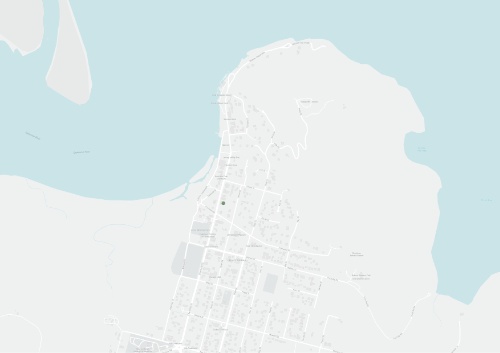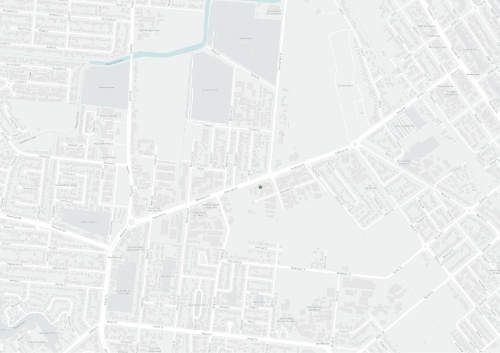Plan Explorer
Filter by:
Region
Topic
Sector
Other
Results
Western Cape Chamber of Commerce strategic plan 2010-2012
Obsolete CommunityThis strategic plan was developed following a review of the 2007 Western Chamber of Commerce Strategic Plan during a workshop in Weipa on the 20th of November 2009.
Port of Weipa environmental management plan
Current StrategicThis environmental management plan was released by the North Queensland Bulk Ports Corporation as part of their environmental program with the objective of acting as a reference document for all then-current and potential users of the Weipa port.
Brumby Hollow Property Pest Management Plan
Obsolete OperationalThis plan outlines the sustainable land management practices for Brumby Hollow over 4 years. Objectives are:
Bunata Property Pest Management Plan
Obsolete OperationalThis plan aims to protect the economy and environment of Bunata from the adverse impacts of weeds and feral animals.The objectives for weed and feral animal management in Bunata over the next 4 years are:
Butchers Hill Station Pest Management Plan
Obsolete OperationalTo manage the land of Butchers Hill Station, in a sustainable way, by controlling weeds and pest animals on the property, and ensuring it’s economic and environmental viability continues into the future.
Threats to priority species of the Cape York Peninsula region
Current Government PolicyOn day one of the regional workshop, participants used their knowledge of individual species to identify the major and minor regional threats that are affecting each species. On day two of the regional workshop, species were grouped by major threats.
Cape York Peninsula Feral Pig Management Plan 2006-2009
Obsolete OperationalThe Cape York Peninsula (CYP) Pest Management Strategy provides a planning framework for coordinated pest management between research bodies, agencies, communities, industries, individuals and the government.
Queensland Pest Animal Strategies - Feral Pigs (Sus scrofa)
Obsolete Government PolicyThe overall vision of the feral pig management strategy is to use best practice
management to minimise the impact of feral pigs on the environment, economy and
health of Queensland.
The strategy is intended to achieve five outcomes:
Cape York Peninsula Pest Management Strategy
Obsolete StrategicThe Cape York Peninsula Pest Management Strategy (CYPPMS) is a broad over-arching document that establishes a Cape-wide planning framework for integrated pest management by government, community, industry and individuals.
Jim's Joint Property Pest Management Plan
Obsolete OperationalThe plan has been prepared to protect the economy and environment of “Jim’s Joint” from the adverse impacts of weeds and feral animals.
Julery Pastoral Property Pest Management Plan
Obsolete OperationalThe plan represents a workable pest management program which identifies, combats and eradicates declared environmental pest plants and feral animals for Julery Pastoral.
Maitland Downs Property Pest Management Plan
Current OperationalThis plan provides a sustainable land management program for Maitland Downs, to control weeds and pest animals on the property, to ensure it’s economic and environmental viability continues into the future.
Cape York Peninsula Pest Management Plan 2006 - 2011
Obsolete StrategicThe Cape York Peninsula Pest Management Plan (CYPPMP) establishes a Cape-wide planning framework for integrated pest management by Government, Community, Industry and Individuals.
Eastern Kuku Yalanji Indigenous Protected Area Management Plan Stage 2
Current CommunityJalunji-Warra Land and Sea Country
(excerpt)
Cape York Peninsula Regional Biosecurity Strategy
Current StrategicCape York Natural Resource Management (Cape York NRM), Cook Shire Council (CSC), Weipa Town Authority, Wujal Wujal, Hopevale, Lockhart, Mapoon, Napranum, Aurukun, Pormpuraaw and Kowanyama Aboriginal Shire Councils and the Northern Peninsula Area Regional Council (NPARC) have collaboratively devel
Recently added
Cape York Peninsula Land Use Strategy: Land Use Program: Tourism Study of Cape York Peninsula
CYPLUSThis study endeavoured to gather information about the then present tourims industry in the Cape York Pennsula as well as the future outlook and possible issues that may affect the tourism industry in the Peninsula.
Cape York Peninsula Land Use Strategy: Natural Resources Analysis Program: Terrestrial Vertebrate Fauna of Cape York Peninsula
CYPLUSThe primary aim of the Terrestrial Vertebrate Fauna project was to gather information by undertaking field serves in key areas lacking then existing data on vertebrate fauna and make that available for incorporation into the Conservation Assessment in stage 2 of the CYPLUS report.
Cape York Peninsula Land Use Strategy: Land Use Program: Survey of Forest Resources of Cape York Peninsula
CYPLUSAs an aspect of the Land Use Program a study into the forest resources of the Cape York Peninsula was undertaken with the aim of compiling a regional outlook on the economic, environmental, and cultural resources of forests and woodlands in order to establish a baseline of their use in the early
Cape York Peninsula Land Use Strategy: Natural Resources Analysis Program: Wetland Definition and Fauna Assessment of Cape York Peninsula
CYPLUSThe aim of this project was to define the differnt types and respective distribution of those types of wetlands within the Cape York Peninsula CYPLUS study area and attempt to investigate patterns between wetland habitat and faunal occurence.
Cape York Peninsula Land Use Strategy: Natural Resources Analysis Program: Vegetation Survey and Mapping of Cape York Peninsula
CYPLUSThis report summarises information about the structure, floristic composition, and areal extent of the present vegetation on the Cape York Peninsula in 1994.
Cape York Peninsula Land Use Strategy: Land Use Program: Values, Needs and Aspirations Study of Cape York Peninsula
CYPLUSThis study was undertaken between July 1994 and Janurary 1995 as a project within the Land use Program of CYPLUS.
Cape York Peninsula Land Use Strategy: Land Use Program: An Assessment of the Conservation and Natural Heritage Significance of Cape York Peninsula
CYPLUSThis report both details the distribution of particular conservation values across the Cape York Peninsula and also acts as a guide for the 40 GIS layers created during the CYPLUS conservation assessment.
Cape York Peninsula Land Use Strategy: Natural Resources Analysis Program: Fauna Distribution Modelling for Cape York Peninsula
CYPLUSThis project report was published in 1995 as part of the CYPLUS reporting. It's pirpose was to make information of the fauna of the Cape York Peninsula readily available to those who required it or may require it in the future.
Cape York Peninsula Land Use Strategy: Land Use Program: Services and Infrastructure of Cape York Peninsula
CYPLUSThis report which compromises an aspect of the CYPLUS reporting gives an overview of the social structure and inherit obstacles in the way of community growth on the Cape York Peninsula.
Mitchell River Watershed Management Group business plan
Current OperationalThis document was a strategic plan released in late 2012 that intended to guide the Mitchell River Management Group on the priorities of the organisations stakeholders, defining a set of projects and activities for implementation, documenting the areas which funding might come from, and defi

